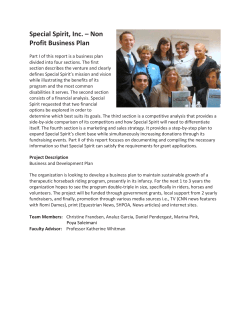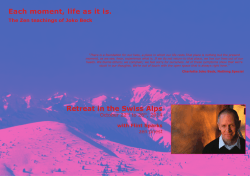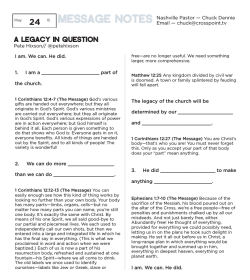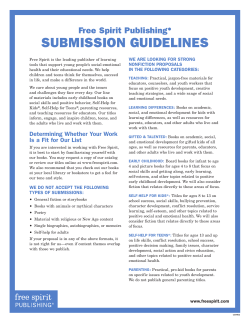
Access the slideshow
Traditional Family Parenting Reclaiming Our Indigenousness Welcome Introductions Agenda – oral teachings Guide – use your own personal stories Your own teachings – Common Thread How A child Was Raised Same teachings; don’t play with fire, willow teaching, don’t play outside at night, belly button teaching, swing, cradle board, moss bag Training We are all facilitators – means to assist; to help move along to another level of thinking What did I come to teach? Until we find purpose existence has meaning. We all have a purpose. To create awareness for change Who am I, What is my purpose, What do I want to leave for my grandchildren? To Develop What am I doing to promote culture in my nation? As facilitators to develop Cultural Identity Restore our parenting skills Skills We must live in 2 worlds But we only give them skills of the western world What are we doing today to give them the skills for cultural identity? The Power of Cultural Identity Grandsons Twins The Knowledge Our Ancestors always had this knowledge It is in our Creation Stories Animals taught us parenting skills To protect and teach Objectives Strengthen Cultural Identity Parenting Practices Bonding and Attachment Understanding that disconnection leads to emotional problems and violence RAD Dr. Gabor Mate Dr. Bruce Perry Reactive Attachment Disorder Failure to form normal attachments Neglect, abuse, separation from mother Multiple caregivers Leads to difficulties later in life Studies – mental health issues stem from this Behaviors A need to control A lack of trust and self worth – the world is not safe Feels unsafe and alone The baby cries and no one comes hypervigilant Importance - Bonding Shapes an infants brain Secure attachments It will affect future relationships – how you interact with other people Original Instructions Each culture was given a Creation Story Going back to the ‘Original Instructions’ – observe nature/animals – taught us parenting Restoring the Teachings – they are not lost, just not used . Preparing the next generation – there is no other work more important than fatherhood and motherhood Natural Laws – Laws of the Creator Before contact our people lived in harmony – balance Oral history – The Creator left Turtle Island to us and in return we were to look after it. Head – Ellesmere Island Right – Labrador Bottom – Florida Tail – Mexico Left – California Front - Alaska Opening Comments These teachings were from an ancient time The most profound child psychology – bonding/attachment If we are to prepare the next generation – physically, mentally, spiritually, emotionally Healthy relationships, healthy children, healthy communities How Are Ancestors Raised Children Attachment and Bonding Love 20 – 40 Positive Strokes per day It Takes A Village to Raise A Child Fathers played an important role Our History Before Contact • Columbus 1492 • 90 – 120 million Indigenous People • 53 languages – 11 language groups • Alquonquin largest group • Cree is the most widely spoke • Cree name landmarks, Chicago, Mississippi, • Manitoba, Quebec, Canada • Each culture – Creation Story Introduction – 15 pole teachings Background history – Walkerton, Ontario Teepee Teachings – Elders/Oral Teachings, Curriculum Remembrance – hope, love and compassion Future generations will benefit by how you will use this information and passing on Planting Seeds Renewing our parenting skills To not repeat the same statistics in the next generation – 47% now 67%. MB 93%. SK 80% Cultural continuity Instilling pride in our youth and future generations Cross cultural tool – removes biases and misunderstanding. E.g.. Children in care It is about appreciating and understanding another culture. 15 Poles – Natural Law - Wahkotowin 1. obedience 2. respect 3. humility 4. happiness 5. love 6. faith 7. kinship 8. cleanliness 9. thankfulness 10. share 11. strength 12. good child rearing 13. hope 14. ultimate protection 15. control flaps from the wind Creation Story - Woman The First Classroom 4 Sacred Gifts Given to a Mother Keepers of the water Moss bag and Tikinagan Traditional Swing (Wewepison) Lullabyes Mothers The first sound – mothers heartbeat The first teacher Emotional part teacher – 0 – 7 The Way It Was – The Ways of our People Our Ancestors Extraordinary healthy and physically fit, disease free Had the knowledge to maintain and treat illness Diets were nutritious Life had purpose and value Common that our people live to over 100 years old Order We had our own health care Pharmacy, pharmacists Therapists, counselors No one was unemployed, no homelessness Belief that everything had a spirit Chiefs – Leaders of the Camp Leadership Who listened well – said few words but when they spoke it was powerful, had to time to formulate their thoughts Had to be able to lead the people People first We have to raise the next generation of leaders Move away from power and authority – to go back to how it was - compassion Quote Dalai Llama “When educating the minds of our children, do not forget their hearts” Spirit – do not wound their spirit Child – center of attention Moss bag Natural Discipline Beginning of the Day Mothers Spirit Creating Balance Prayer Smudge Amautik – Mothers of the North The word means to carry Bonding 4 aspects Still commonly used Moss Bag Natural discipline Learning how to use their senses To be aware Shaped like the womb/security/warmth 4 Sacred Gifts 4 Sacred Gifts given to a Moss Bag and Tikinagan Baby Sight Smell Hearing Touch Critical Thinking Roles and responsibilities Structure Behavior was role modeled Book – A Child Is Born Awareness & Observation The tools used were moss bag, cradleboard traditional swing – balance/released a chemical for immunity To promote awareness Children looked at nature, the roles of mother and father Nature Swing - Wiwepison Cradleboard Mobiles Belly Button Safety Everything was a Teaching • girls forward – to look at mother’s role and to it was a way to learn the language • Boys outward – to learn the male roles • Language Moccasins Group Process for group Strength N Communities - intact Knew language & culture Teachings - Womb Common Teachings before birth grandparents Obedience, Respect Spiritual name Humility Soft spot, moss bag, belly button Bonding, breast feeding Earned the right Keepers of Traditions Teachers/Counsellors bluntness Implemented teachings Songs/ceremonies Be a Man Fire Teaching Rites of Passage – 4 of teachings Spiritual foundation – Celebration/transition Earned the Right Kinship/Adoption Understanding wome understanding men Passage Home Helpers – feas Discipline/Aunts&Uncles Ceremonies, fi keepers Teaching Lodges Time to prepare To have vision Marriage – 30’s kitchiwiikitowin Arranged marriages Shared responsibility Okichitawak – warriors Protectors of the people Review Moss Bag, Swing, Cradleboard, Soft Spot 0 – 7 Bonding – can almost determine your future First Moccasins – hole on bottom of moccasin Breast Feeding – first vaccination First 3 teachings – obedience, respect, humility Teepee Pole Teachings – 15 virtues The first classroom 20-40 positive – Teachable moments Moss Bag We laid in water for 9 months Shaped like our mother’s womb Security Mother’s heartbeat Like being in a classroom Swing When our mother’s walked – we were swinging Natural movement of water Motion – creates a chemical for immunity Cradleboard Same concept as the moss bag – womb Easier to carry Tikinagan Awareness Rites of Passage – Young Males In the time before puberty, young boys were encouraged to spend time with their female relatives so that they would have an understanding of women. Young girls were also encouraged to spend time with their male relatives for the same purpose. This encouraged open and thoughtful communication in later years. Young Males When a boy reached the age of puberty it became the responsibility of his father, uncles, other male relatives and friends to teach him what he needed to know to become a man. He would be taught what he needed to know about living away from the community, in the bush, forest or plain, wherever it may be that they will need to know how to survive. Young Males They would be taught about plants and medicines, tools, what types of animals are good for hunting and how to use the various parts of the animal. Spiritual teachings and teachings about relationships and their responsibilities as men. They were taught how to apply these teachings to their daily lives. The principles of peace, respect, kindness, caring and love Rites of Passage – Young Girls First Menstrual – referred to as Moon Time. The full moon is every 28 days which is the same as a woman’s cycle. A powerful time. 4 days from the community Skills that they would need when they had their own families; cooking, cleaning, self respect, relationships Volunteer in the community – looking after the Elders Protocols Very strict about what you couldn’t do during your moon time. Segregation – each month Own items – cutlery, blankets, towels Couldn’t go near ceremonial items Ceremonies 4 Seasons – 4Stages of Life Winter of your life Spring – new beginning Fall – change Preparing Summer of your life Fatherhood is Sacred – Traditional Systems We can never go back to how it was To ensure the nation’s future by the children Followed the teachings – virtues Father’s Role - Parent Traditional Role – provide and protect Greatest impact – is the type of relationship the father has with their mother The ripple effect – the children are seeing a healthy relationship Young boys will act like their fathers Fathers By being involved the infants have higher IQ’s and extends into young adulthood Emotionally secure – are able to know what they are feeling Promote independence Fathers must take the lead in keep families together Conduct Conduct was done through ceremonies and story telling Rites of Passage Honoring the child Self esteem of child Story Telling A way to show the teachings and teach conduct Life lessons 4 Stages of Growth Awasis (This little star being) loaned to us 1. Holy Stage (Pekihkaytaken Pikiskewin)is conception to 7 years Getting mind , body, soul ready Super sensitive stage 2. Starting Stage – Maciwepinkew Pikiskewin Development learning 8 – 17 years of Moon time (Grandmother moon) Stages of Growth 3. Lecture stage (Okakeskwew) Teaching lodges Early adolescence – female 17 - 18 years Emotional well being has to be synchronized Male - 17 to 24 4. Been giving all teachings (Okisowatomo) Female 19 – 20 yrs. (mind grows faster) Male 25 – 30 Significance of Language Language has a spirit “kise” – Kise Manitou – Compassionate God Nehiyaw – 4 bodied person “sun, thunderbird, wind earth” Before any event - prayer & protocol is first Stepping over – translation “Pahstahowin” Ohcinewin – to respect all living things/animals Inflict your family present day and also four generations by breaking Creator’s natural laws Atsiy api – umbilical cord Kitsi – belly button/what is your name/tansi kitsi ka The Way It Was Quote – Elder Mary Thomas – Shuswhap Elder “In order to move ahead and get on with our lives, we have to know where we came from; we have to look at where we’ve been to get to know where we’re going”. Ethnocide/Genocide Difference Genocide is destroying a whole race Ethnocide is destroying a culture Triangle – land, language, people The downfall of our people A Way of Life Gone 1492 - Columbus landed in the America’s European influences – devalued our language and culture – changed our relationship with land and its resources Diseases – many Indigenous people wiped out in the first centuries of contact Economies weakened, political systems challenged Deterioration of a way of life Banned Sun Dance Potlatch Colonization – Do Away With the Indian Assimilation The government has always had an agenda to assimilate The plan was outline in the 1969 White Paper to transfer us to the Provinces including our lands. Using different methods Residential Schools, 60-70’s Scoop, Child Welfare System Removal Remove the child from family and language Strip away all identity Treaties & Residential School • 1876 Indian Act •Residential Schools 1874 - 1996 •BC – highest number of schools Residential Schools Changes Destroyed our family structures – the start of intergeneration trauma – the one’s that were hurt before us Affected the self esteem of our men Family violence Loss of parenting Loss of identity; language, culture, traditions Alcohol Dependency System – Welfare Diabetes – 1950’s Addictions Sexuality HIV – is fast growing in FN Educate young people about safe sex STD’s Experimenting at young ages now Be blunt Age appropriate teachings Teen age pregnancies Suicide First Nations youth – highest rate of suicide Know the signs Children in care – suicides Homosexuality – 2 Spirited – risk is greater than heterosexual youth Were accepted before contact – inclusiveness/diversity/valued members Suicidal - alienation Educate yourself – NAHO Report on Two Spirited Stages of Decolonization Rediscovery and Recovery Mourning Healing/Forgiveness Action/Build Capacity Lateral Violence People that have experienced colonization Now is ‘internalized colonization’ – anger People lashing out at each other - shunning We do it to ‘who we walk with’ Behaviours – comes from hurt and pain Gossip, shaming, backstabbing, family feuds Has affected vision – community spirit Religious wars Is the main cause of why healing is taking a long time in our communities – educating is the key to stop this Lateral Violence Sticking up for your child Teachers – Schools face consequences of parents Don’t participate Educate people about lateral violence Before Speaking Negatively - THINK T – is it true? H – is it harmful? I – is it informative? N – is it necessary? K – is it kind? 3 types of parenting 1. Authoritative – fear based 2. Permissive – fear based 3. Democratic Spiritual Residential School My Life Survival Mode No self esteem/bonding severed which Leads to insecure attachments Stunted emotional, mentally, spiritually 20 – 40 positive to develop health self esteem Emotional Mental Today – in training/Elder No rites of passage Ashamed of heritage Wake Up Insecure, no trust No Teachings Behaviours –child l Lack of Parenting Skills Physical Gangs, teenage pregnancies Parenting - Today More complex world – technology Unique challenges as compared to our ancestors Growing up in homes – alcohol, drugs, violence Gangs High rates of divorce Single parent homes Poverty Less role models How Do We Face the New Challenges? Culture Parenting programs Fatherhood programs Camps Language Bringing Culture/Traditions in Classroom Moss bags No time out – be prepared to have material ready to teach a virtue, books, pictures, etc Shake hands, saying virtue words, activities Schools need to have an environment of creativity Educate the Whole Child Waldorf System – the heart and the hands Spiritual, Mental, Physical, Emotional Create a culture of caring Flexible, adaptable, resourceful Outdoor Education programs - successful 3 Types of Parenting – Modern Day Authoritative – fear based, focus on discipline with less parental love, blame, shame coercion, child cannot think for themselves – behaviour based on fear. If a parent was raised like this. Permissive – fear based, child feels insecure, no boundaries, feels parents don’t care (how to undo – balance love with limits) Democratic – equality, respect, negotiation For the child to grow with the 4 aspects – a child must have an emotional connection with a parent – from birth Stages of Growth Babies rely on the caregiver for basic needs and also love – personality is influenced by the culture they are born with We should not call it terrible two’s – they are exploring – exploring independence Age 3 to 5 – time to explore, group play, social skills, Shaming – shy, not confident, may remain dependent upon adults 6 to 12 – learning not mastery, develop confidence, Should encourage learning to be fun Time Out - Consequences There was no time out Kept children in the circle Do not wound their spirit Best time to teach Virtues, story telling with a moral 6 to 12 Learning not mastery which develops confidence Logical thought is unfolding Crucial that creativity be nurtured Education system – labelling begins Public education was from 1900’s – industrialism Passion for learning is doused – his spirit becomes damaged – shame, low self-esteem Life time struggle of incompetence When a encouraged – naturally excel 12 - 21 On a search for truth – the power of his/her own thinking 12 - 21 Time of confusion – need compassion and sensitivity Time to find out who they are – shaping uniqueness At times want to be alone Finding their values Rites of passage – Father/son Mother/daughter Critical time to have a parent/child relationship 7 Grandfather Teachings Move to Power Point How Do We Bring Back Values By raising a child spiritually, emotionally, mentally and physically Everyone had a role Shared agenda Preparedness Braids – family together Obedience - Nanahitamowin Good listening skills Listening to Elders and parents Obedience leads to spiritual insight Have discipline to reach your goals Developing positive thoughts Respect - Kisteyihtowin Respect is the basic law of life – foundation every home in the world Respect in the home – same direction Fire teaching – women’s heart – leads to respect for women Treat every person from babies to Elders with respect at all times Treat the earth and all aspects as your mother Show deep respect for the belief and religion of others Humility - Tapahteyimowin Never think that we are more important than anyone Role modeling this virtue We can never be lost when we listen to our spirit – always directing us Freedom from pride and arrogance Happiness - Wiyatikweyimowin Having an inner sense of peace Wake up each day that you have been given another day When we are happy – obstacles or problems are not so large A smile does not cost anything – being friendly Many First Nations people have a ‘sense of humour’, which as become a survival skill Love - Kisewatitatowin Love is the foundation for everything A child needs 20 – 40 positive strokes per day (It takes a village to raise a child) Love will change minds & behavior Love forgives Love will heal Natural outcome is higher self esteem To be considerate and compassionate to all living things Faith - Tapowakeyihtamowin A child to be taught there is a Creator Must have faith to have hope Understanding Spirituality Silence – listening to your spirit Prayer Strong character education leads to Faith and ethics Kinship - Wahkohtowin Teaching boundaries Teaching the child not to address grandparents, aunts, uncles and parents by name Son – Nikosis, Daughter – Nitanis Pride in knowing family tree Build trusting and loving relationships with relatives Stressing the importance of knowing who you are related to – marriage purposes Cleanliness - Kanateyimowin Cleaning up your mistakes – amends, restitution, forgiveness Clean mind – not to gossip, free from judgements Putting things in order Keeping body clean Staying free from harmful substances – spirit Thankfulness - Nanaskomowin Giving thanks every morning for the life within you and that the Creator has given you another day to walk on Mother Earth Being in a state of thankfulness makes you a happier person Being thankful of one’s gifts and blessings Remembering that we have our families in times of need Share - Wichitowin Understanding is enlightened through legends and stories Sharing our experiences in healing circles Sharing your time to help people in need Volunteering Sharing your blessings Strength - Sohkeyihtamowin Never giving up – to persevere Value of life long learning Seize opportunities for growth Strong mind – connect mind/heart/balance Stand your ground with peer pressure Good Child Rearing – Miyo-Opikinawasowin Preparing for parenthood – Rites of passage Responsibility Teach, role model and mentor virtues Understanding the importance of extended family – grandmothers, aunts, uncles Hope - Iyitateyihtamowin Always expecting positive things to happen in life Language and culture to be revived Hope is connected to faith Ending generational cycles Adjust our focus – what is my role? Ultimate Protection - Kanaweyimikosowin The Creator Always to acknowledge the Creator first To remember we are not alone and that we have protection We are showing obedience to our Creator’s laws Control Flaps From the Wind nawkaymigana We can change our destiny Making positive changes in our lives We can wake up everyday and decide to have a happy day Only we know what is best for us. Elders have earned the right to speak bluntly about life Seek guidance Groups How can we bring back these teachings back to our 1. Families 2. Communities 3. School Renewal Our people healing Conferences, training, cultural programs Families mending New generation of youth Ceremonies are coming back Future What do we do for the next 500 years? We all have a responsibility Solutions within your organizations & communities Create mechanisms of change based on our values and traditions Education, Child Welfare, Justice and Health Programs need to be reflective our teachings – in your respective languages Future Early intervention and prevention in place before family breakdown Empowerment programs – give the power back to the people Who are we if we don’t know our culture and language? Spiritual Companioning Listen Be a friend Change our language – using virtue words Future We cannot change the past but we can make decisions today to make a better future for our children and grandchildren When educating the minds of our children, do not forget their hearts. • Quote – Dalai Llama Quote “ No one is more cherished in this world than someone who lightens the burden of another” Closing Comments “We all have a responsibility to prepare the next generation” Water Experiments – Dr. Emoto You make me sick Dr. Emoto Thank you Prayer Water Experiments Dr. Masuru Emoto 80% of our body is water Our emotions and thoughts affect our body Drinking 8 glasses a day – health benefits Thoughts Negative thoughts vs. Positive thoughts Our body – 80% water What does it do to our body Our thoughts create our future 3 life questions Who Am I? What is my purpose? What kind of Elder do I want to be? Ho w can we bring back teachings What are you doing right now to promote culture and language in your community? Organization Home Day 4 - Trainers Facilitate from the heart – touch their spirit The Power – is in the People Gain leadership support Engage community members what programs they want which is giving the power back – support Short – Long term goals Implementation Plan Don’t reinvent the wheel What are your assets now? Strengths E.g. Elders, History, Language What is holistic education? Head, Hands, Heart Teaching in developmental stages Life long learning – inspire in the early years Experience that is not in the classroom A sense of belonging to family, school, community Holistic Education Physical – love, secure attachments, physical activity Mental – activities that lead to critical thinking, keeping their playful spirit alive Emotional – free expression, boundaries Spiritual – being mindful of the child’s spirit Outcome Learning will be fun and life long Curious Compassionate Resilient – bullying, relationships Positive parenting Outcome Ethical – values of nation Vision Balanced/healthy Happy The Gifts Waldorf Curriculum Holistic approach/same as Traditional Systems Language Traditional Parenting teachings Story Telling Values/Virtues in the Schools – curriculum beginning in early childhood to high school Identify Each community is different Have a core implementation plan Identify the gaps and barriers In each target group Child, Youth, Adult, Elder
© Copyright 2025









